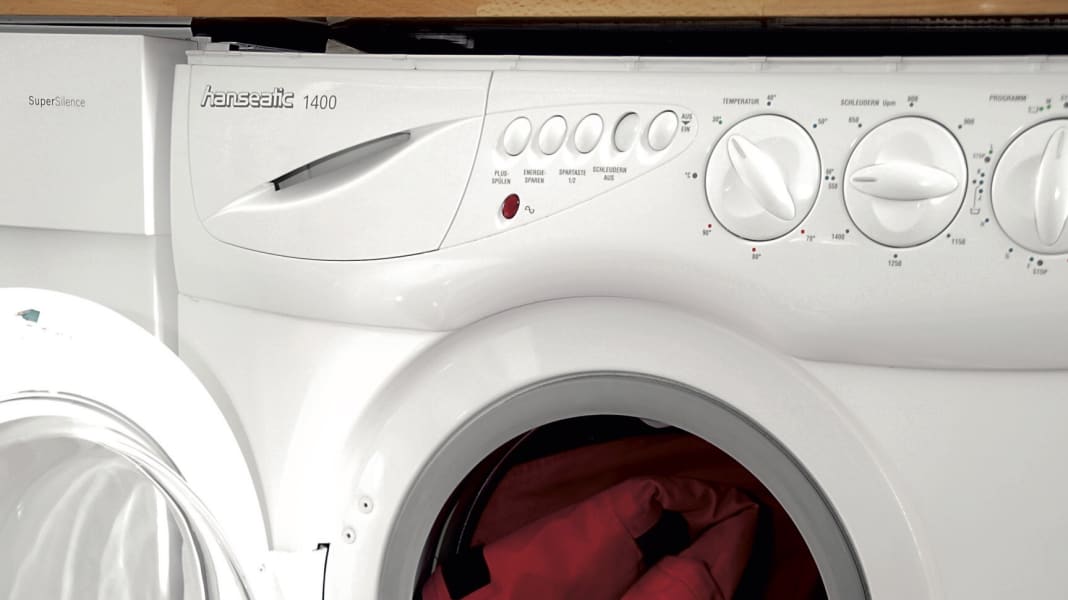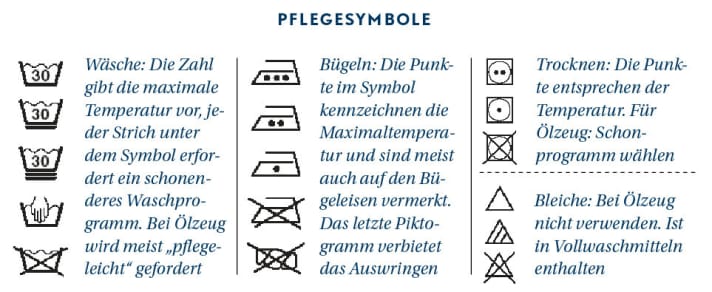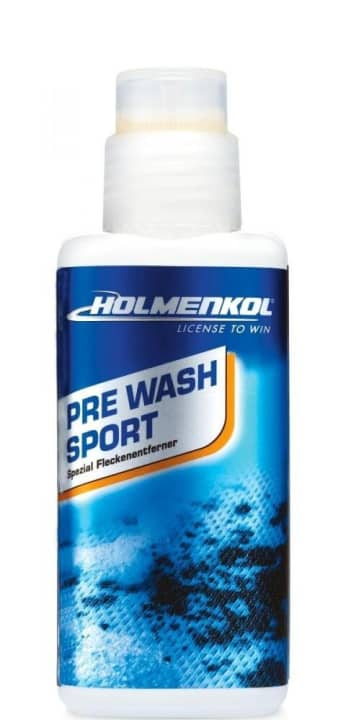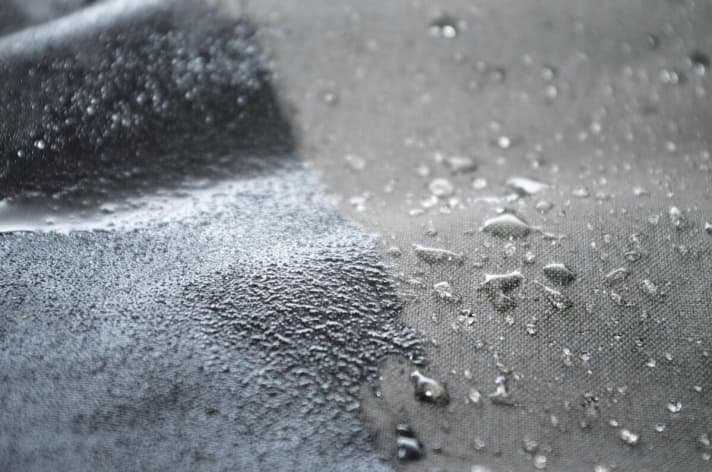Equipment special: Oilskin special part III: correct care and cleaning

Modern sailing clothing is waterproof and breathable. To keep it that way, it should not be washed, according to popular opinion. In most cases, this is a misconception - all manufacturers now recommend washing clothing from time to time precisely in order to maintain breathability.
Of course, this is not so much about visible dirt or mustiness on the outside, which can rarely be completely removed, but rather the inside benefits from the wash cycle. This is because weatherproof sailing clothing consists of several layers of material.
Oilskin consists of layers and membranes
The outer layer ensures the mechanical strength of the textile, but is neither waterproof nor airtight. These functions are performed by a hydrophilic coating applied to the inside or a hydrophilic or microporous membrane, depending on the area of application of the clothing. Both systems work according to different physical principles, but ensure that although liquid water cannot penetrate, water vapour can be transported to the outside.
Without regular cleaning, salt and grease will accumulate on the inner layer and can reduce breathability to almost zero. In the worst case, the inner layer can even be damaged, which can cause the clothing to leak. Goretex jackets and the like also need to be washed regularly, as skin and hair grease in particular, as well as residues from suntan lotion, creams and make-up, can have a damaging effect over time. The how and when of cleaning depends on the use, the material and your personal sense of hygiene.

To ensure that the planned cleaning does not damage the fabric, the manufacturer's care instructions should be followed first. As usual, these can be found on a small label on the inside - but sometimes only on the jackets. The pictograms provide information about the maximum washing temperature and whether the garment can withstand the machine and in which programme. The materials differ considerably in some cases. While Gore-Tex products are relatively hard-wearing and can be cleaned at up to 40 degrees in the machine's easy-care programme, other membranes or coated systems are more sensitive. Marinepool, for example, also advises washing, but only to a limited extent and by hand - cold or at a maximum of 30 degrees.
Very important: heavy-duty detergents and fabric softeners are taboo. Bleach can damage the membranes and coatings, and the silicones contained in fabric softeners stifle breathability. They also accumulate on the inside of the textiles and make the material water-repellent there, which also prevents the desired moisture transport to the outside.

Delicate detergents are also not recommended. These are usually heavily perfumed in order to create a supposedly fresh fragrance even at low washing temperatures and correspondingly moderate cleaning performance. However, these perfumes are usually hydrophilic and therefore impair the water-repellent effect of the outer fabric.
Given the low washing temperatures, stubborn stains are difficult to remove. However, manufacturers advise against conventional soaking. Instead, the oilskins should be pre-treated locally with a special stain remover for functional clothing and washed after a short soaking time. To remove any detergent residue, an additional rinse cycle can do no harm, and the drum should be filled no more than halfway and the oilskin should not be spun. Zip fasteners should be closed except at the pockets so that they cannot be damaged in the machine.
Aftercare
Manufacturers are less unanimous when it comes to aftercare - for example, whether the oilskins should or should not be tumble dried. Some manufacturers argue in favour of this, not because the clothes would otherwise remain wet for too long, but to make the outer fabric water-repellent again. To prevent a closed film of water from forming in the rain, which would hinder breathability, the outer fabric is given a durable water repellent coating (DWR) at the factory. This layer is damaged over time, but can be reorganised by heating it slightly, for example in the tumble dryer. With a bit of luck, the water will roll off again.
If you don't have a tumble dryer, you can also use an iron. You should be able to achieve a similar effect on a low setting and with a towel as an intermediate layer.

However, it is essential to read the care label before heat treatment. Excessively high temperatures can melt the membrane or coating. The oilskin may not be visible from the outside, but its function will be lost once and for all.
The DWR layer is an important part of the breathable finish of sailing clothing; as soon as the water no longer beads off, it should be refreshed. This is often the case after one or two seasons or several washes. Various waterproofing sprays are available on the market for this purpose. It is also important to ensure that they are specifically suitable for breathable clothing. When spraying, less is often more. The oilskin should be evenly wetted, but the fabric should not be soaked with impregnation. This is because it must not stick together and it must still be possible to transport moisture to the outside.

